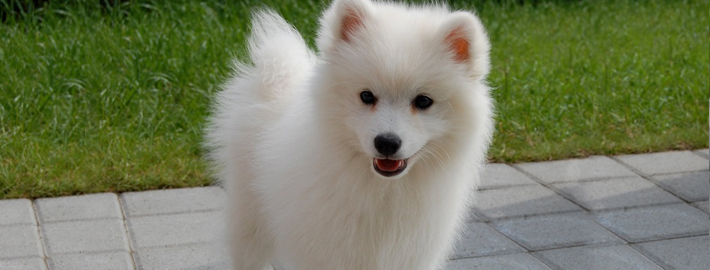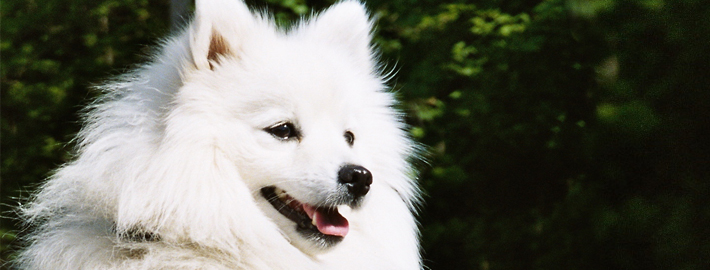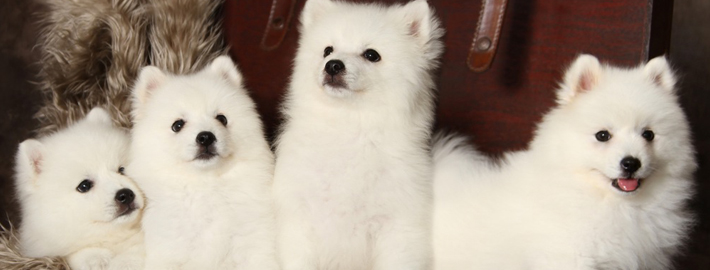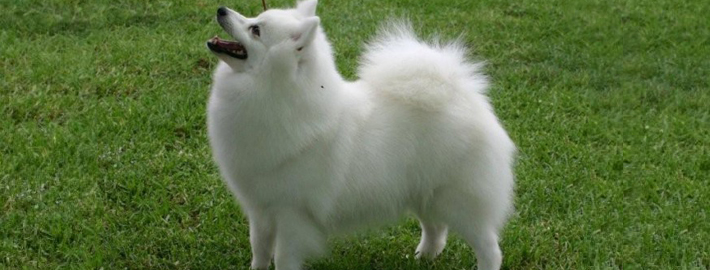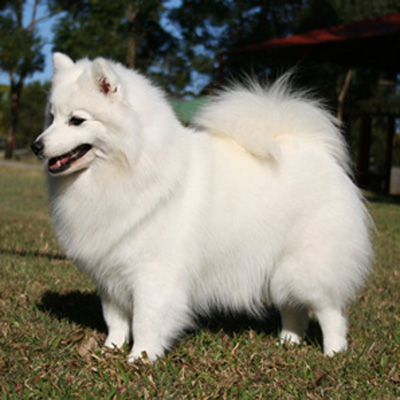What makes the Japanese Spitz Unique?
The Japanese Spitz is a bold, loyal, active, playful, affectionate and happy companion. He seems to be smiling all the time! He thrives on being with his owner, and wants to go with you wherever you go. He can sit and warm himself in your lap, but he is not the kind of dog who sleeps all day–he’s lively and full of fun, even well past his puppy years.
Breed Groups
Page Contents
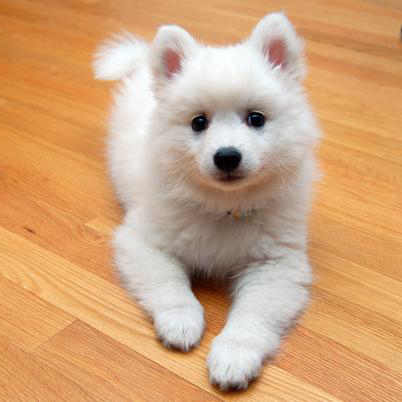
Is the Japanese Spitz Right For You?
The Japanese Spitz is very intelligent. It is eager to please and quick to learn, picking up new commands and following instructions with ease. The Japanese Spitz is also an excellent playmate for children, being gentle and loving with a healthy sense of fun.
Fearless, alert and protective, the Japanese Spitz can be slightly suspicious of new people. With the proper introductions, it will soon relax and turn on the charm. With a loud and forceful bark, it makes a very effective watchdog—especially for city dwellers.
In 5 Words
- Happy
- Energetic
- Obedient
- Loyal
- Intelligent
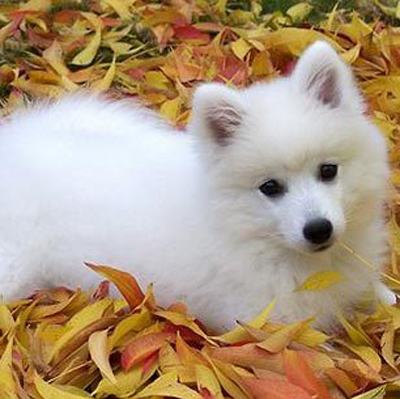
Characteristics
Learn About the Japanese Spitz
Description
General Description
The longhaired coat of the Japanese Spitz has a thick under-layer that is always pure white. The tail is covered with long hair and is carried curled over the back. The coat is short on the bottom half of the legs, with breeches on the hind legs and feathering on the forelegs. The ears are small and pointed upright, and the muzzle tapers slightly. The large oval eyes are dark and slightly slanted, and the nose and lips are black. The face of the Japanese Spitz is wedge-shaped. There is dense feathering on the feet.
Short History of the Japanese Spitz
Dog breeders in Japan in the 1920s and 1930s created the Japanese Spitz by crossbreeding a number of other Spitz breeds to develop the Japanese Spitz. Breeders began with white German Spitz dogs, originally brought over from northeastern China to Japan; they were first exhibited at a dog show in Tokyo in 1921. Between 1925 and 1936 various small white Spitz breeds were imported from around the world and crossed into the developing breed, with the goal of producing an improved breed. The final Standard for the breed was written after World War II, and accepted by the Japan Kennel Club. The breed gained popularity in Japan in the 1950s, and was exported to Sweden in the early 1950s. From there the breed went to England, and the Kennel Club recognized the Japanese Spitz in 1977 in the Utility Group.
Temperament
The Japanese Spitz is a high-spirited, intelligent, and playful dog. This happy dog is usually good with children and usually gets along well with other dogs and household pets. Socialise them well or they can be reserved and even somewhat aloof with strangers. The Japanese Spitz is, in spirit, a big dog in a little dog’s body. This tough little dog acts as a house protector and guardian. The Japanese Spitz can be an inveterate barker if you allow them to believe they are in charge. They are good for apartment life. This breed is fairly active indoors and will do okay without a yard as long as it gets plenty of outings and exercise.
Caring for Your Japanese Spitz
General Health
Responsible breeding practices can limit the occurrence of major health problems in this breed but some of the most common issues include patellar luxation and runny eyes or tear staining. Runny eyes are often caused by stress or allergies and can easily be treated by bathing the eye in warm water.
Grooming & Bathing
The coat of the Japanese Spitz is its most recognizable feature – it is white and plush, forming a thick mane around the neck. The fur on the lower legs is shorter, but the tail is well-furred and is carried curled over the back. Due to the thickness of this breed’s double coat, regular brushing and grooming is necessary to keep the coat healthy and to reduce shedding.
Exercise & Training
They do not need lots of exercise, but they are an active breed and enjoy being taken for a walk. If they are bored they can be mischievous. They are not a dog you can leave in the backyard and forget. They enjoy living both indoors and outdoors, in fact they enjoy being wherever you are, they thrive on human companionship but are happy to be the only dog in the backyard.

